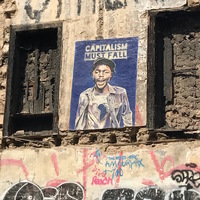
Paolo La Greca
Related Authors
Stefano Maffei
Politecnico di Milano
David Seamon
Kansas State University
Asli Odman
Mimar Sinan Fine Arts University
Armando Marques-Guedes
UNL - New University of Lisbon
Enrico Cirelli
Università di Bologna
Yannis Hamilakis
Brown University
Eszter Banffy
Hungarian Academy of Sciences
Dimitris P. Drakoulis
Aristotle University of Thessaloniki
Emanuele Greco
Università Degli Studi di Napoli "L'Orientale"
Maurizio Carta
Università degli Studi di Palermo










Uploads
Papers by Paolo La Greca
Books by Paolo La Greca
Contemporary cities are often the outcome of an aggregation of different parts grown in an informal way. In these systems sometimes the expression ‘periphery’ looses its original
meaning of outwards bounds distinguished from the centre (De Carlo 1993). The same happens in Catania, a medium size city of southern Italy where the settlement system is characterized by a complex combination of marginal neighbourhoods intertwined with richer and more vital ones. This is particularly true in transition areas between the main municipality and the surrounding towns, a quite common phenomenon in large conurbations of western countries. However, here another occurrence parallels this one, the presence of large historic
neighbourhoods that show characters of economic, social and functional marginalization where illegal activities are concentrated as well as urban blight. Looking more in depth, these areas, that can be defined “at risk”, represent a highly heterogynous set as far their formation process and settlement pattern are concerned. Their other relevant feature is the strong
resistance to change both from physical and social points of view, even if specific actions have been taken to improve or upgrade them.
Contemporary cities are often the outcome of an aggregation of different parts grown in an informal way. In these systems sometimes the expression ‘periphery’ looses its original
meaning of outwards bounds distinguished from the centre (De Carlo 1993). The same happens in Catania, a medium size city of southern Italy where the settlement system is characterized by a complex combination of marginal neighbourhoods intertwined with richer and more vital ones. This is particularly true in transition areas between the main municipality and the surrounding towns, a quite common phenomenon in large conurbations of western countries. However, here another occurrence parallels this one, the presence of large historic
neighbourhoods that show characters of economic, social and functional marginalization where illegal activities are concentrated as well as urban blight. Looking more in depth, these areas, that can be defined “at risk”, represent a highly heterogynous set as far their formation process and settlement pattern are concerned. Their other relevant feature is the strong
resistance to change both from physical and social points of view, even if specific actions have been taken to improve or upgrade them.